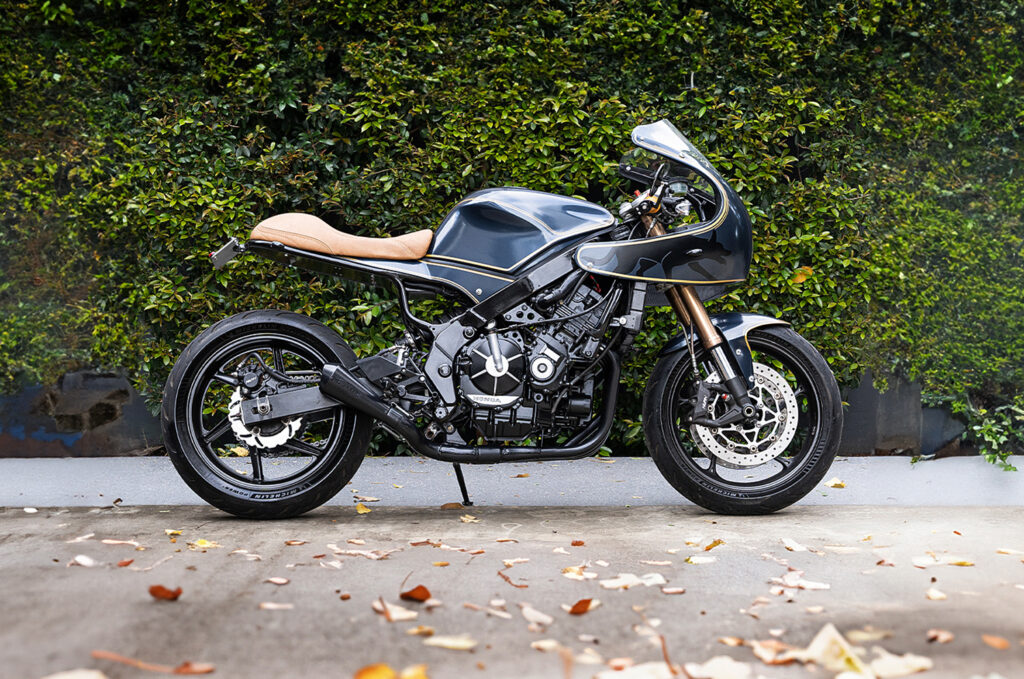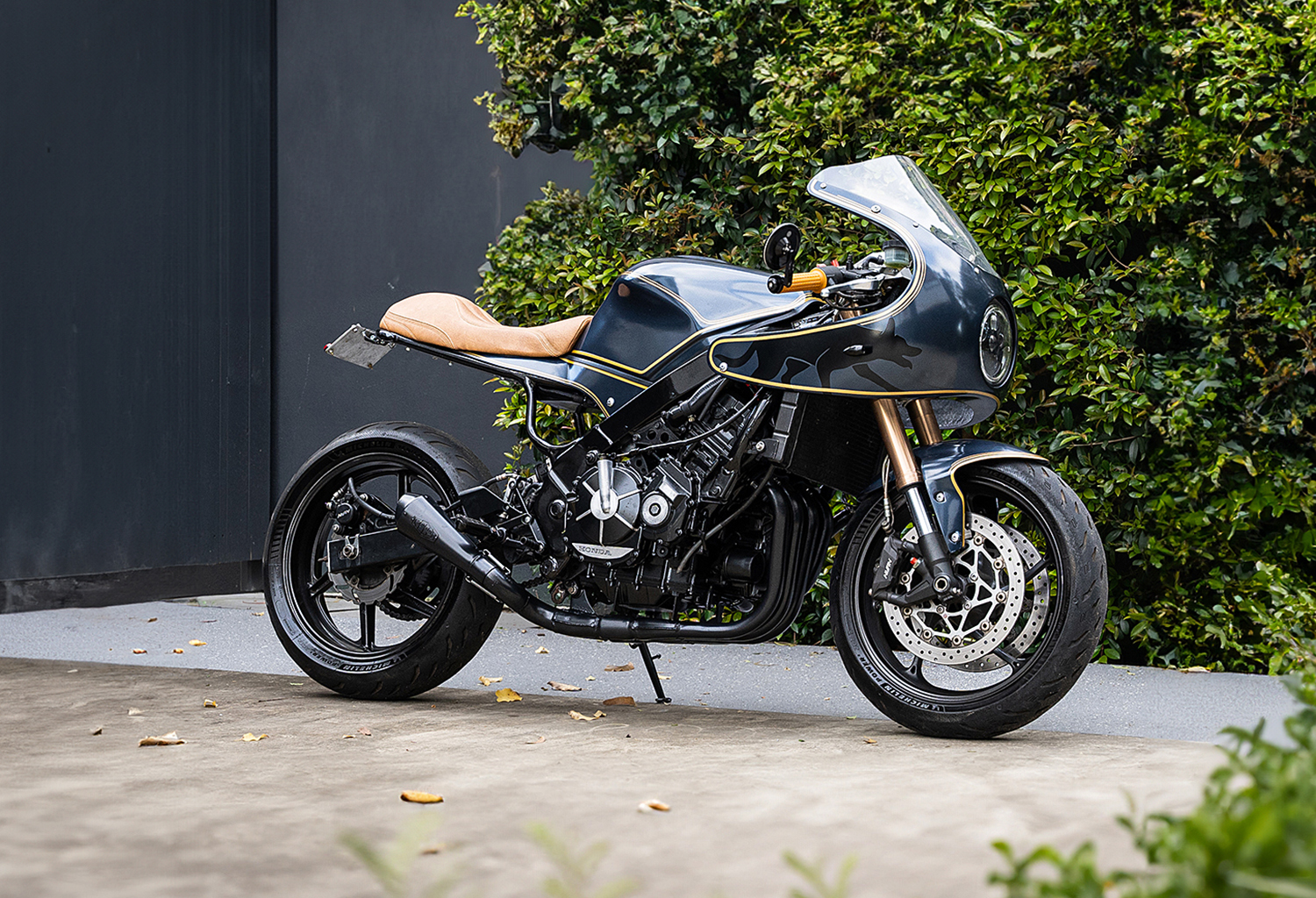
Ah, the ’90s—the music was great, there was no such thing as a reality TV star or an influencer, and the internet had arrived to place all sorts of delights right at our fingertips. It was also a golden era for motorcycles, with sports bikes taking over and delivering incredible performance at a bargain basement price. But their styling didn’t age anywhere near as well, and with perimeter frames, they’re not the easiest things to customise. Undeterred, Queensland’s Jock Houston knew that if he made all the right moves, he could produce a stunning classic custom from a 1993 Honda CBR600F. And the man behind Kelpi Custom Moto has more than delivered, producing a machine with mighty modern performance while oozing endless classic charm.
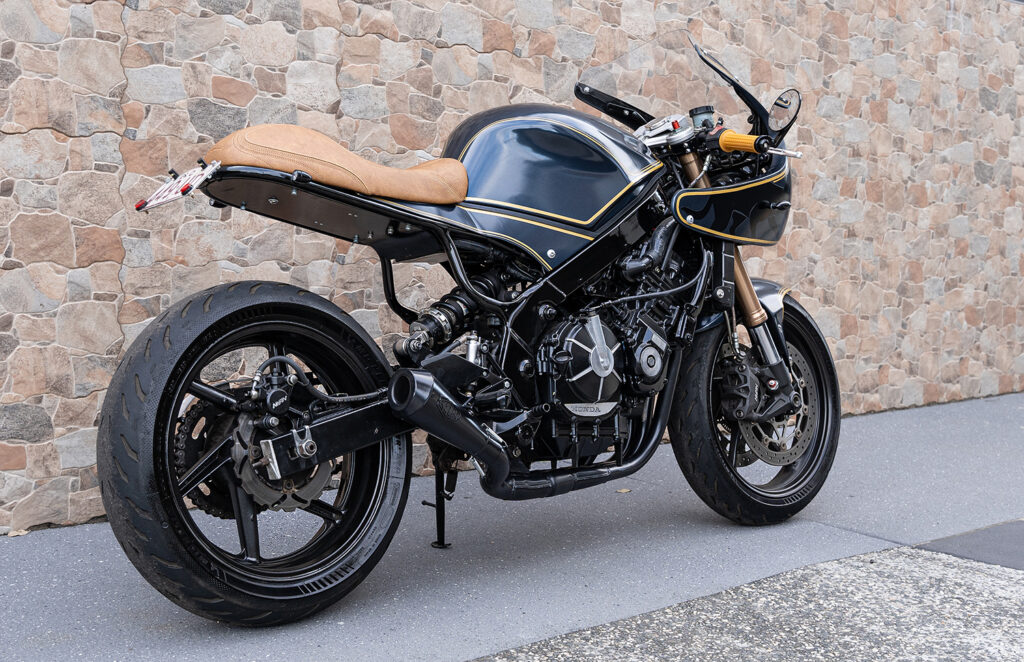
Jock set up his business around four years ago, and Kelpi sells a wide variety of custom motorcycle parts, with an emphasis on their stunning handmade seats and vintage-styled exhaust systems for a whole range of bikes. What started as a single order has grown to include thousands of clients in more than 80 countries worldwide. Jock has an impressive team that he works with, and when they’re not producing their own line of high-end parts, they build one-off customs to showcase their talents. Jock first built this bike back in 2020, but after putting 15,000 km on the odometer, an accident in January paused the Honda’s progress.

There was a decision to be made: patch it up or build the bike again, but do it better than ever. Noticing all of the little things he’d change the second time around, Jock decided to go all in on the 600F. “The new brief was much the same as the initial one: to use a high-revving middleweight golden era sports bike and take it backwards in time visually while modernising the performance,” he tells us. The first part of bringing the tech up to scratch was creating a chassis to handle and brake brilliantly. To achieve this, Jock swapped in a Daytona 675R front end, utilising the original Honda stem and swapping out the bearings.
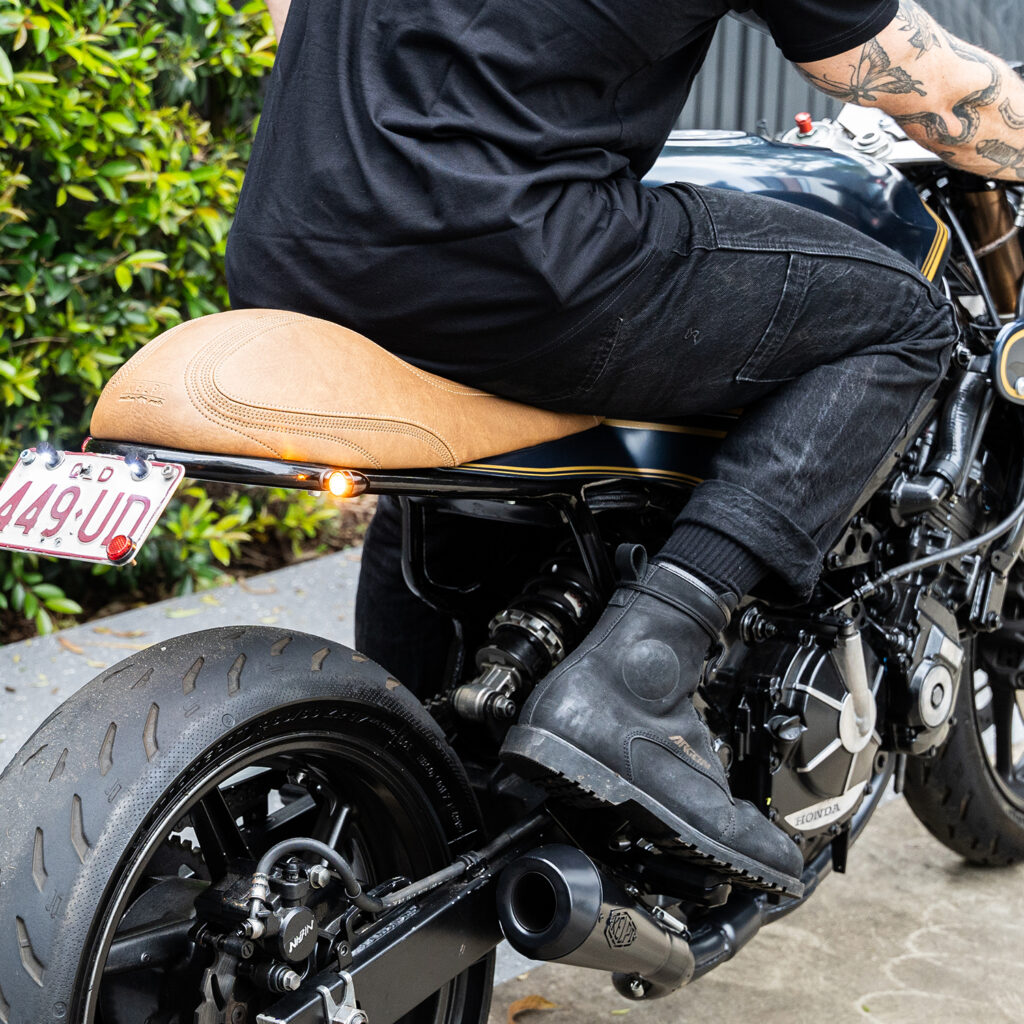
“This allowed us to retain the OEM front wheel, Nissin brake calipers, and Brembo rotors from the 675R for the build.” All of these parts combine to drastically improve the bike’s performance, and the rear end was next on the menu. Just like the Daytona front, the CBR600RR, which donates its rear shock is from 2013, and Jock has neatly hidden the remote reservoir out of sight. To further improve the braking, some Goodridge braided lines have been bolted on, and Michelin Power 5 tyres, front and rear, give the bike a bunch more grip. To save a few kilos, the centre stand was removed, the battery was replaced with a lightweight item and a sprocket change spices up the gearing.
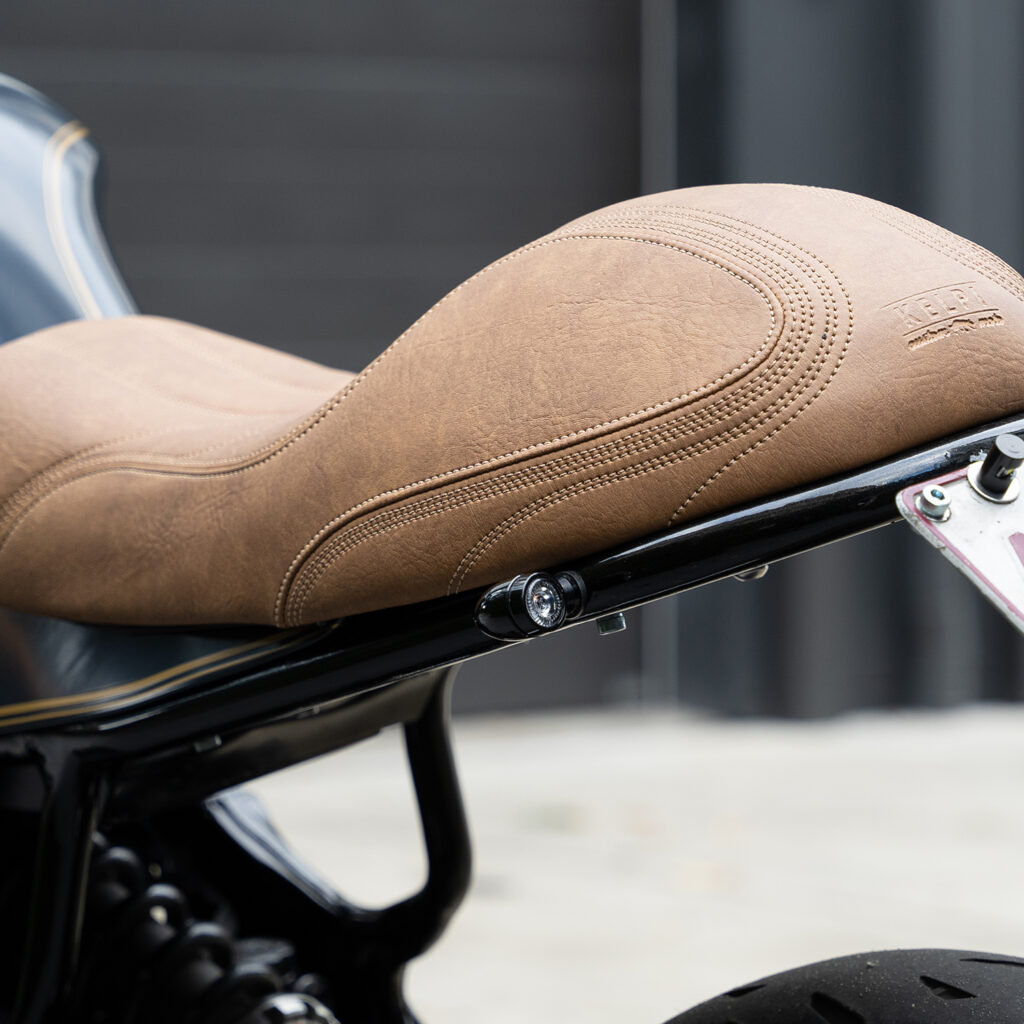
Then it was time to improve the looks. “We chopped the square-shaped subframe out of the lower frame supports and started building the upper subframe in a shorter, cleanly hooped style,” Jock explains. Using a pipe bender, a far more curvaceous subframe has been shaped, which not only creates some beautiful classic lines but also helps to free up a bunch of visual space beneath. After welding the new creation to the main frame, an ultra-neat alloy tray was crafted to sit between the new rails and serve as a battery box. That minimalist rear really allows the front end to shine, and it’s all based around a TRX850 fairing kit, called a Twig TT, previously built by a guy out of Melbourne.
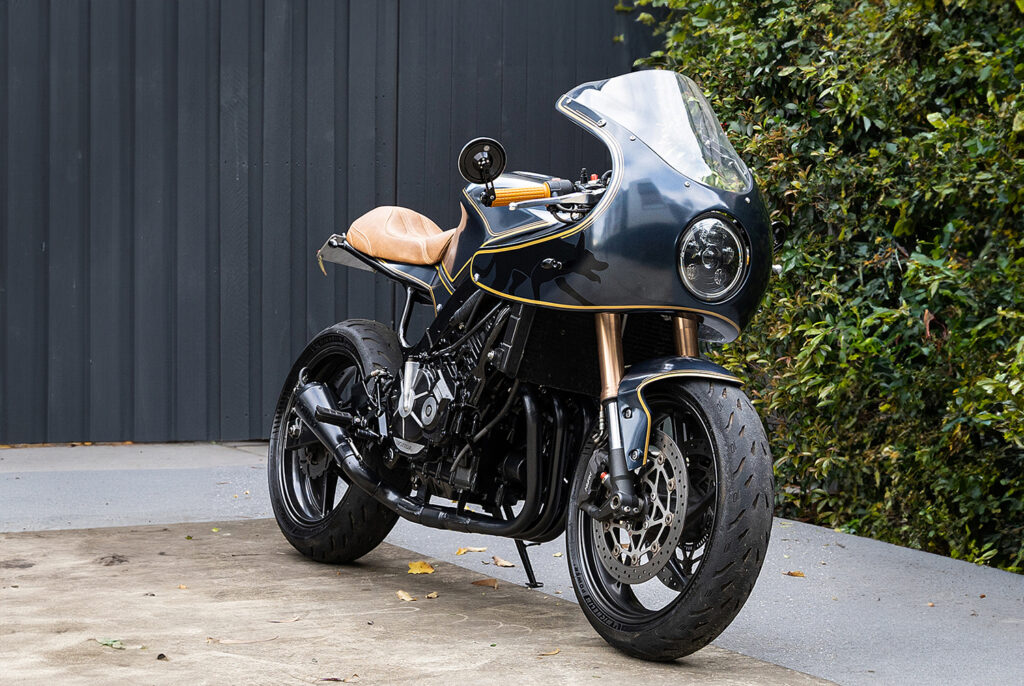
“We used a stock TRX850 fairing bracket out of mild steel with the frame mount lopped off and redone to suit the CBR600. Once we’d chopped and replaced the fairing stay supports to clear the turning circle, we were fortunate enough to be left with a twin-cylinder front fairing that fits the screamer’s wider frame.” The visual impact of the fairing is undeniable; it looks amazing, but a ’90s sports bike fuel tank offers a different visual challenge. To give it more cohesive lines, a set of aluminium side covers are brilliantly shaped and help to tie the looks together, now flowing neatly from front to back.
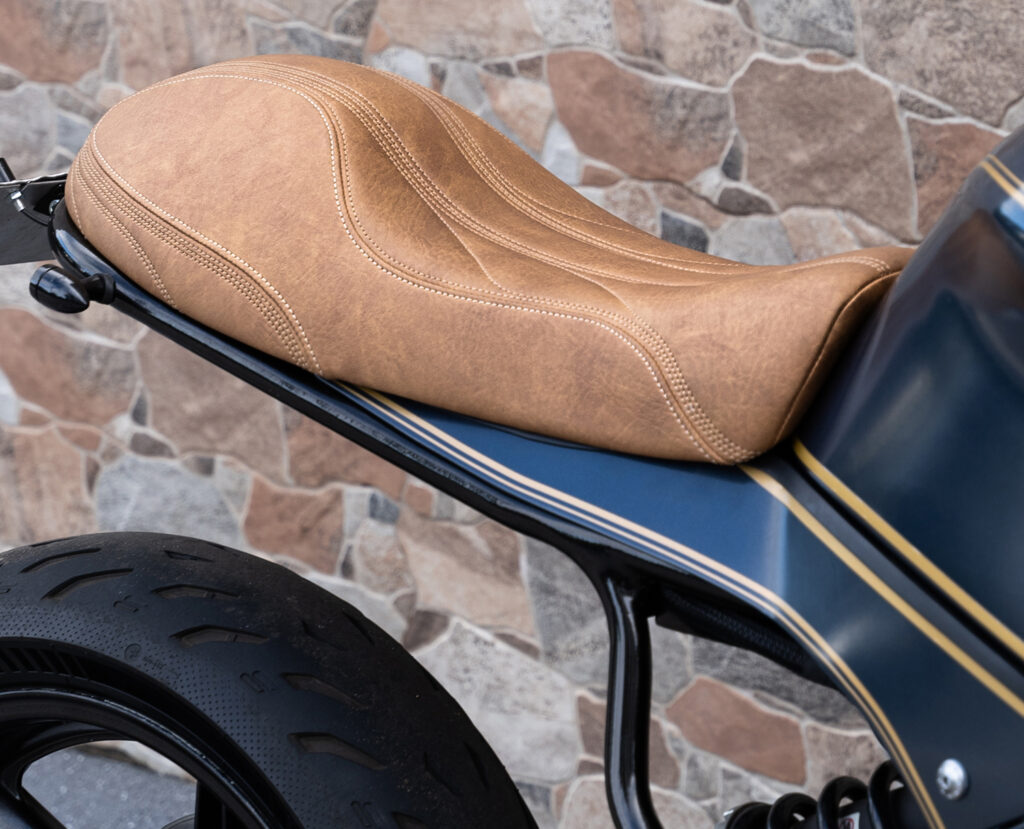
Seats are a big part of the Kelpi business, so making the right unit for the project was never going to be a problem. “We set to work on the seat pan, sticking to ABS plastic to keep the forming fairly simple and the upholstery fitment nice and easy. Three densities of foam were stacked and then shaped, which helped us keep the profile fairly slim while allowing for full days in the twisties.” The almond vinyl over the top is a popular colour at the moment, and the incredible stitching, based on their “Ridgeback” design, gives you an idea of the sort of quality you can expect when you order a seat of your own from Kelpi.
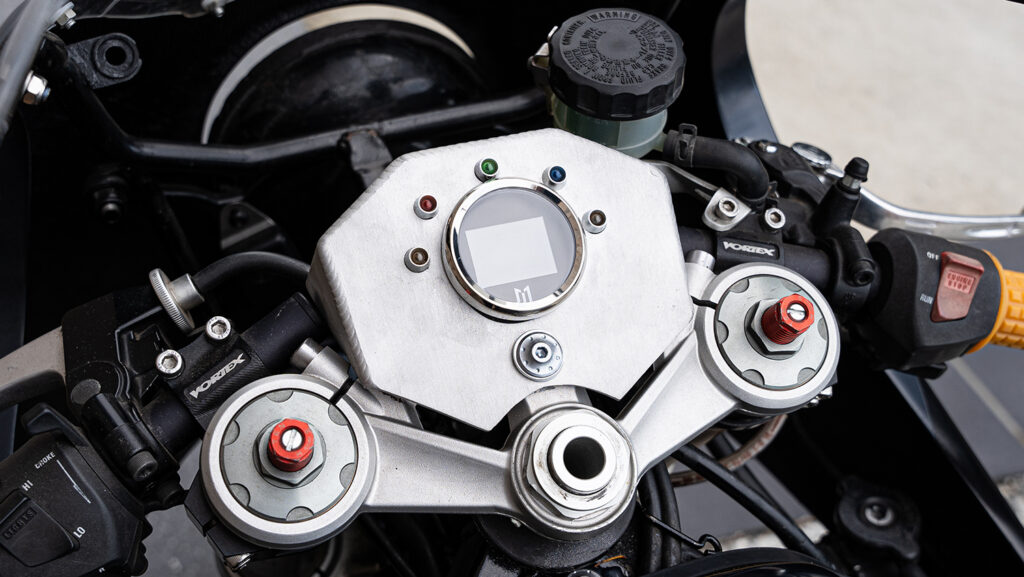
The paint then adds a brilliant contrast, and the dark colour scheme really aids in capturing the classic styling Jock was after. To set the foundation, the frame is finished in a mix of black with a hint of metallic silver flake, while a bunch of parts like the swingarm have been hit with satin black Cerakote. The tins are finished with a satin clear, and “the art deco bronze gold line work was laid with varying thicknesses that collect as they meet, and we paired these with large black kelpie silhouettes on the sides of the fairing.” The soundtrack comes courtesy of one of Kelpi’s booming handcrafted stainless mufflers, and a host of quality components finish out the build. It wasn’t an easy task, but the results speak for themselves, with Kelpi Custom Moto’s Honda delivering the best of old and new, in a package that is unrecognisable from that original ’90s foundation. I want one.
